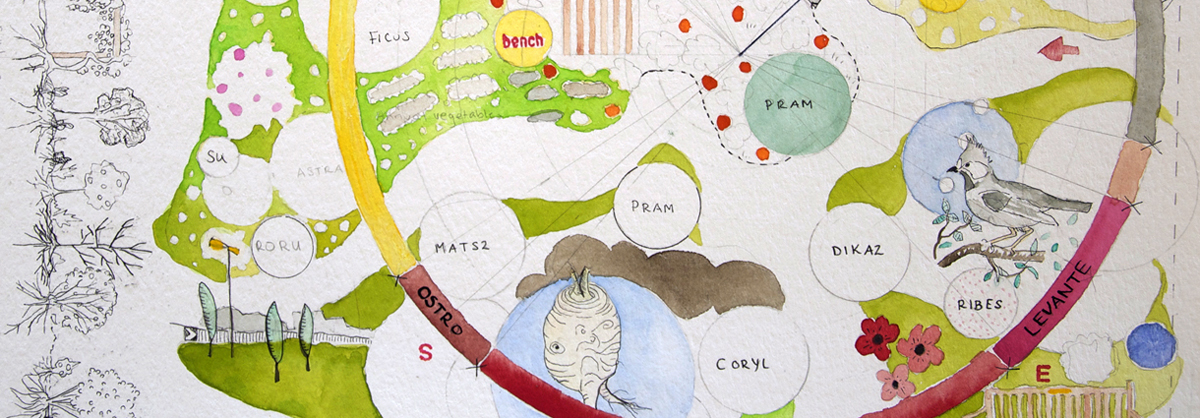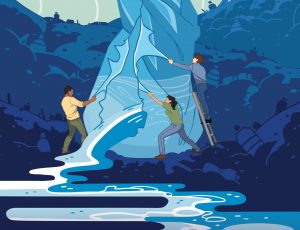Workshop_40/Wild energies: wind, fire and people in movement

For those in Torino:
Workshop_40/Wild energies: wind, fire and people in movement
Conducted by Marguerite Kahrl e Marjetica Potr?
Friday, March 20 3.30 – 5.30, meeting with stakeholders
Saturday, March 21 10.00 – 4.00, Participatory design in groups
In contrast to maps showing urban elements such as spaces, buildings and their function, the map made using the methodology of permaculture aims to trace how wild energy passes thru the neighborhood, including flows of wind, ambient sound, course of water, people and plants who move about in this highly transient neighborhood. The Permaculture map aims to build a new understanding of how to achieve a sustainable existence in a neighborhood in constant flux. The PAV* neighborhood presents a great opportunity to understand the city in permanent change, and for residents to take action. The map can be used as a tool for residents to interpret the place in a new way and shape participative governance in their neighborhood, while redefining their lives and environment towards sustainable urban existence. Finally Kahrl and Potrà will design an on-site project together with residents to show the power of the neighborhood and to start the transition to a more resilient community.
Marjetica Potr? returns to Turin, after participating in the group exhibition Vegetation as a political agent – curated by Marco Scotini and celebrating the inaugural programming of his artistic direction at PAV. Potr?’s contribution was the publication of The Soweto Project (Archive Books Berlin, 2014) realized together with students from the course “Participatory design practices for the Living World” (led by Marjetica Potr? at the Hochschule für bildende Künste of Hamburg).
Permaculture is a holistic approach to sustainability based on design principles of Earth Care, People Care and Fair Share. Permaculture design methods can be used to improve the quality, productivity and creativity of our lives, community and environment.
Ten years ago, the Permaculture principles were used by environmentalist Rob Hopkins, as a tool to start the Transition Towns movement. The movement, which began in the town of Totnes, UK, became a successful example of a grassroots community project that seeks to build resilience in response to the exploitation of resources, destruction of the climate and economic instability.
Research for Wild energies will be accomplished in the neighborhood where PAV is located Lingotto, Nice Millefonti, Filadelfia – a small town in the City of Turin. We hope the project can contribute to a new understanding of the territory, and the ability to develop interconnections with the Experimental Centre of Contemporary Art. Six years after the inauguration of the PAV, and on the occasion of the fortieth workshop conducted by artists, Wild energies will be an opportunity to involve members of the community, beyond social and cultural divides together for the development of an onsite project.
Permaculture has many similarities with Gilles Clément’s landscape design of PAV, for example in the design of human settlements and agricultural systems, areas on the margin which meet or overlap are considered more biodiverse. The workshop intends to include and expand upon this approach to the design of the Third Landscape along with some of Clément’s points for Nouvelle Gouvernance, such as the design for the common good, emerging ecosystems and self-sufficiency.
* PAV | PARCO ARTE VIVENTE – Inaugurated in 2008, PAV is an Experimental Centre for Contemporary Art conceived by the artist Piero Gilardi and designed by the landscapist Gianluca Cosmacini. PAV includes an open-air exhibition site and an interactive museum, meant as a place for meetings and workshops dealing with the ongoing dialogue between art and nature, biotechnology and ecology, between the public and artists.
INFO
PAV | PARCO ARTE VIVENTE | Tel. 011.3182235 | [email protected]



